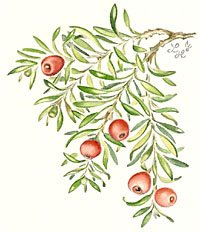:::::::::::::::::::::::::::::::::::::::::::::::::::::::::::::::::::::::::::::::::::::::::::::::::::::
Summer flowers
***** Location: Japan
***** Season: Summer
***** Category: Plant
*****************************
Explanation
This is part of the saijiki for PLANTS in SUMMER.
. PLANTS in SUMMER - SAIJIKI .
. PLANTS and FLOWERS in SUMMER . MAIN LIST

Below is a list of more summer flowers,
which do not have an entry of their own yet.
If you look for a special plant,
check the ABC index of the World Kigo Database.
:::::::::::::::::::::::::::::::::::::::::::::::::::::::::::::::::::::::::::::::::::::::::::::::::::::
kigo for early summer
choojisoo 丁字草 (ちょうじそう) amsonia
..... hana chooji 花丁字(はなちょうじ)
Amsonia elliptica
maagaretto マーガレット marguerite; Paris daisy
Chrysanthemum frutescens. Margaritte
tetsusen 鉄線花 (てつせんか) "metal wire plant", Clematis
..... tetsusen 鉄線(てつせん)、tessen kazura てっせんかずら
Clematis florida
zeraniyu-mu ゼラニューム geranium, Geranie
tenkiku aoi 天竺葵(てんじくあおい)
Pelargonium
:::::::::::::::::::::::::::::::::::::::::::::::::::::::::::::::::::::::::::::::::::::::::::::::::::::
kigo for mid-summer
hollyhock 葵 (あおい) aoi
garden hollyhock, garden mallow, great mallow, holy mallow
aoi no hana 葵の花(あおいのはな)hollyhock flowers
..... hana aoi 花葵(はなあおい)
zeni aoi 銭葵(ぜにあおい)"coin hollyhock"
Malva sylvestris
kara aoi 蜀葵(からあおい)
tachi aoi 立葵(たちあおい)standing hollhock
nishiki aoi 錦葵(にしきあおい)
tsuri aoi つる葵(つるあおい)hollyhock vine
shiro aoi 白葵(しろあおい)white hollyhock
. . . CLICK here for Photos !
Alcea rosea
. Hollyhock Festival (Aoi matsuri 葵祭り)

. Mitsuba Aoi 三つ葉葵 hollyhock crest
aoi no gomon, of the Tokugawa clan
. . . . . but . fuyuaoi, fuyu aoi 冬葵 (ふゆあおい)
hollyhock in winter
Asarum nipponicum
kigo for early winter
. Aoi Shoten 葵商店 "Hollyhock Store"
Sells colorful Daruma dolls in Kawasaki.
futaba aoi 双葉葵/二葉葵 hollyhock with two leaves
moroha aoi 双葉葵(もろはあおい)hollyhock with two leaves
Kamo no aoi 賀茂葵(かものあおい)"hollyhock from Kamo"
..... Kamo aoi 加茂葵(かもあおい)
. The Hata Clan 秦氏 Hata Uji .
and the Korean and Christian connection
.................................................................................
jigitarisu ジキタリス digitalis
kitsune no tebukuro 狐の手袋 foxglove
Digitalis purpurea. Fingerhut

kyookanoko, Kyoo kanoko 京鹿子 (きょうがのこ) "Kyoto bambi deer"
Planted in gardens to enjoy the pink flowers, from June to July.
of the family Filipendula multijuga
There is also a famous Kabuki performance called like this
京鹿子娘道成寺 Kyo Kanoko Musume Dojoji
:::::::::::::::::::::::::::::::::::::::::::::::::::::::::::::::::::::::::::::::::::::::::::::::::::::
kigo for late summer
akansasu アカンサス Acanthus
Akanthus, Bärenklau
baabena バーベナ verbena
..... bijozakura 美女桜 (びじょざくら) "beautiful lady Sakura"
Verbena hybrida. Verbene, Eisenkraut
.................................................................................
gekka bijin 月下美人 "beauty under the moon"
joooka 女王花(じょおうか) "queen flower"
Queen of the Night
Dutchman's pipe cactus . Epiphyllum oxpetalumm
Selenicereus grandiflorus
. . . CLICK here for Photos !
月下美人あるじ只今入院中
gekka bijin aruji tadaima nyuuin-chuu
Queen of the Night -
your owner is in hospital
right now
Horiuchi Ichiroo 堀内一郎
More haiku with this flower and other cactus:
source : www.haisi.com
quote
Gekka-bijin (Queen of the Night)
It was a clear, moonlit night, a little after the tenth of the Eighth Month.
Her Majesty sat by the edge of the veranda while Ukon no Naishi played the flute for her. The other ladies in attendance sat together, talking and laughing; but I stayed by myself, leaning against one of the pillars.
"Why so silent?" said Her Majesty. "Say something. It is sad when you do not speak."
"I am gazing into the autumn moon," I replied.
"Ah yes," she remarked. "That is just what you should have said."
From the 10th-century "Pillow Book of Sei Shonagon," translated by Ivan Morris (Penguin)
source : Japan Times, 2006
.................................................................................
ginpaisoo 銀盃草 (ぎんぱいそう) "silver cup plant"
gin sakazuki 銀盃(ぎんさかずき) "silver sake cup"
Nierembergia rivularis
gojika 午時花 / 子午花 (ごじか) "afternoon flower"
..... kinsenka 金銭花(きんせんか)
yaraku kinsenka 夜落金銭(やらくきんせん)
nichuu kinsenka 日中金銭(にっちゅうきんせん)Midday flower
Pentapetes phoenicea
hatsuyukisoo 初雪草 (はつゆきそう) "first snow plant"
..... mine no yuki 嶺の雪(みねのゆき)snow-on-the-mountain
Euphorbia marginata
hotei aoi ほていあおい Common Water Hyacinth
"Hotei Aoi"
Eichhornia crassipes
. Hotei 布袋 Pu-Tai .
God of Good Luck
nichinichisoo 日日草 (にちにちそう) "day to day plant"
Cape Periwinkle, Rose Periwinkle, Rosy Periwinkle, and "Old-maid"
..... nichinichika 日日花(にちにちか)
shijika 四時花(しじか) four o'clock flower
..... sonohigusa そのひぐさ
Vinca rosea. Catharanthus roseus. Madagaskar-Immergrün
.................................................................................
rugosa rose 玫瑰(浜茄子)(はまなす) hamanasu
saltspray rose, sweetbrier
lit. "eggplant of the beach"
..... hamanashi 浜梨 (はまなし
Its fruit are eaten like sweet peas or made to tea, like rosehip.
This is the crest flower of crown princess Masako 皇太子妃雅子.
. . . CLICK here for Photos !
Rosa rugosa. Weinrose. ハマナス
rukoosoo 縷紅草 (るこうそう) Quamoclit
..... 留紅草(るこうそう)
Quamoclit pennata, Ipomoea quamoclit
.................................................................................
sennichisoo 千日草 (せんにちそう) "thousand day plant"
Globe Amaranth or Bachelor Button
..... sennichikoo 千日紅(せんにちこう)
Gomphrena globosa. Amarant, Fuchsschwanz
yukka ユッカ Yucca, Palmlilie
kimigayoran, Kimigayo ran 君代蘭(きみがよらん)Kimigayo orchid
Yucca recurvifolia
itoran 糸蘭(いとらん)"thread orchid"
Yucca filamentosa
:::::::::::::::::::::::::::::::::::::::::::::::::::::::::::::::::::::::::::::::::::::::::::::::::::::
kigo for all summer
iwafuji 巖藤 (いわふじ) "rock wisteria"
..... niwafuji 庭藤(にわふじ)
..... hime iwafuji 姫岩藤(ひめいわふじ)
Indigofera decora
kinrenka 金蓮花 (きんれんか) Nasturium
..... noozenharen 凌霄葉蓮(のうぜんはれん)
Garden Nasturtium, Indian Cress, Monks Cress
凌霄葉蓮(のうぜんはれん) . Kapuzinerkresse
kinshibai 金糸梅 (きんしばい) "gold thread plum"
Hypericum patulum . キンシバイ
kinuitosoo 絹糸草 (きぬいとそう) "silk thread plant"
orchard grass
Dactylis glomerata
petchunia ペチュニア petunia
..... tsukubane asagao 衝羽根朝顔(つくばねあさがお)
Petunia hybrida. Petunie
suisennoo, suisen no o 酔仙翁草 (すいせんのう) Rose campion
Lychnis coronaria. Steinnelke
*****************************
Worldwide use
*****************************
Things found on the way
*****************************
HAIKU

summer flowers -
so many new faces
on my screen
Gabi Greve
*****************************
Related words
***** Summer 夏 natsu
. SUMMER - Category PLANTS
a KIGO LIST
. PLANTS in SUMMER
SAIJIKI
. . . . . SUMMER
the complete SAIJIKI
[ . BACK to WORLDKIGO . TOP . ]
:::::::::::::::::::::::::::::::::::::::::::::::::::::::::::::::::::::::::::::::::::::::::::::::::::::



















